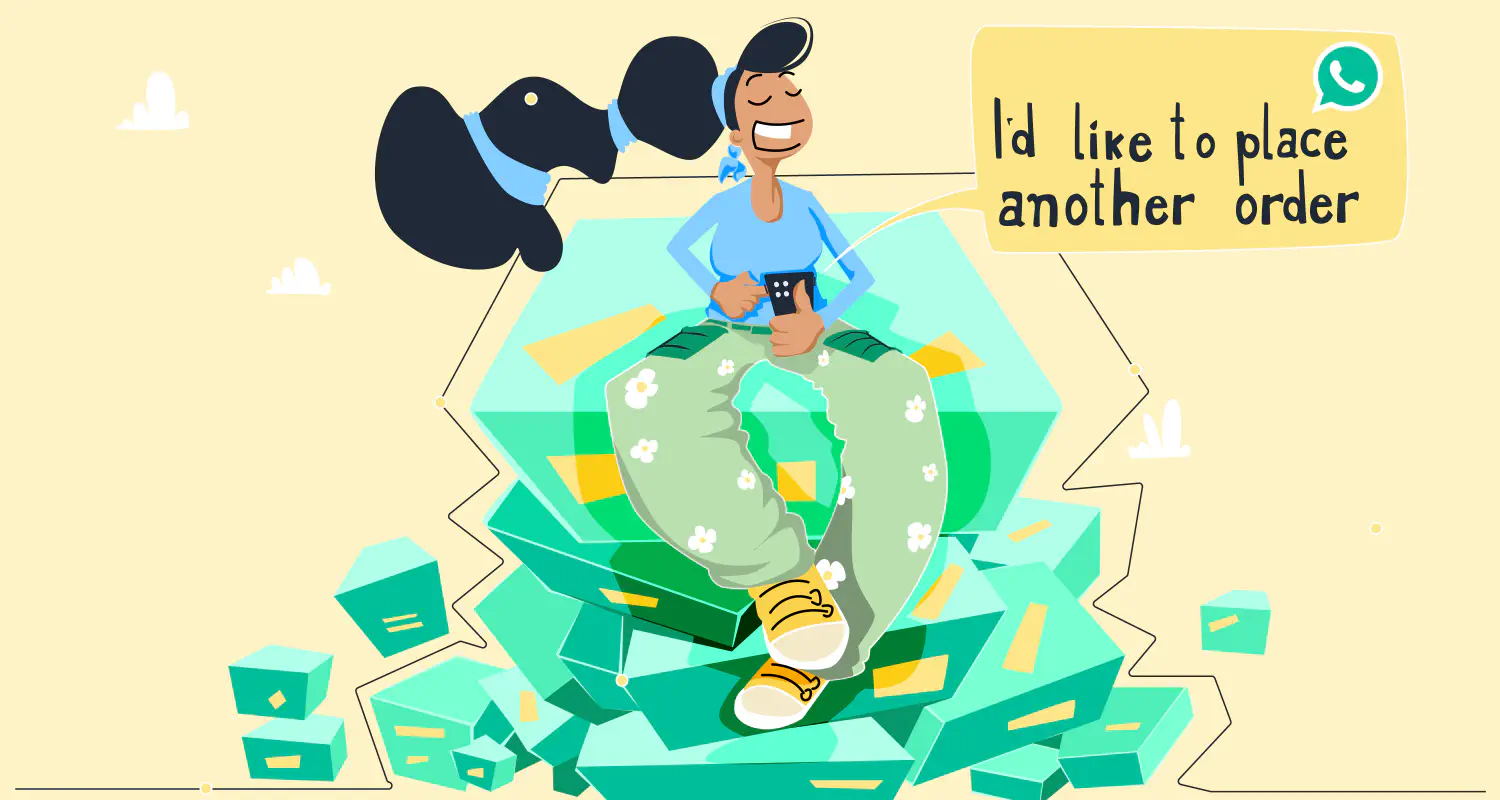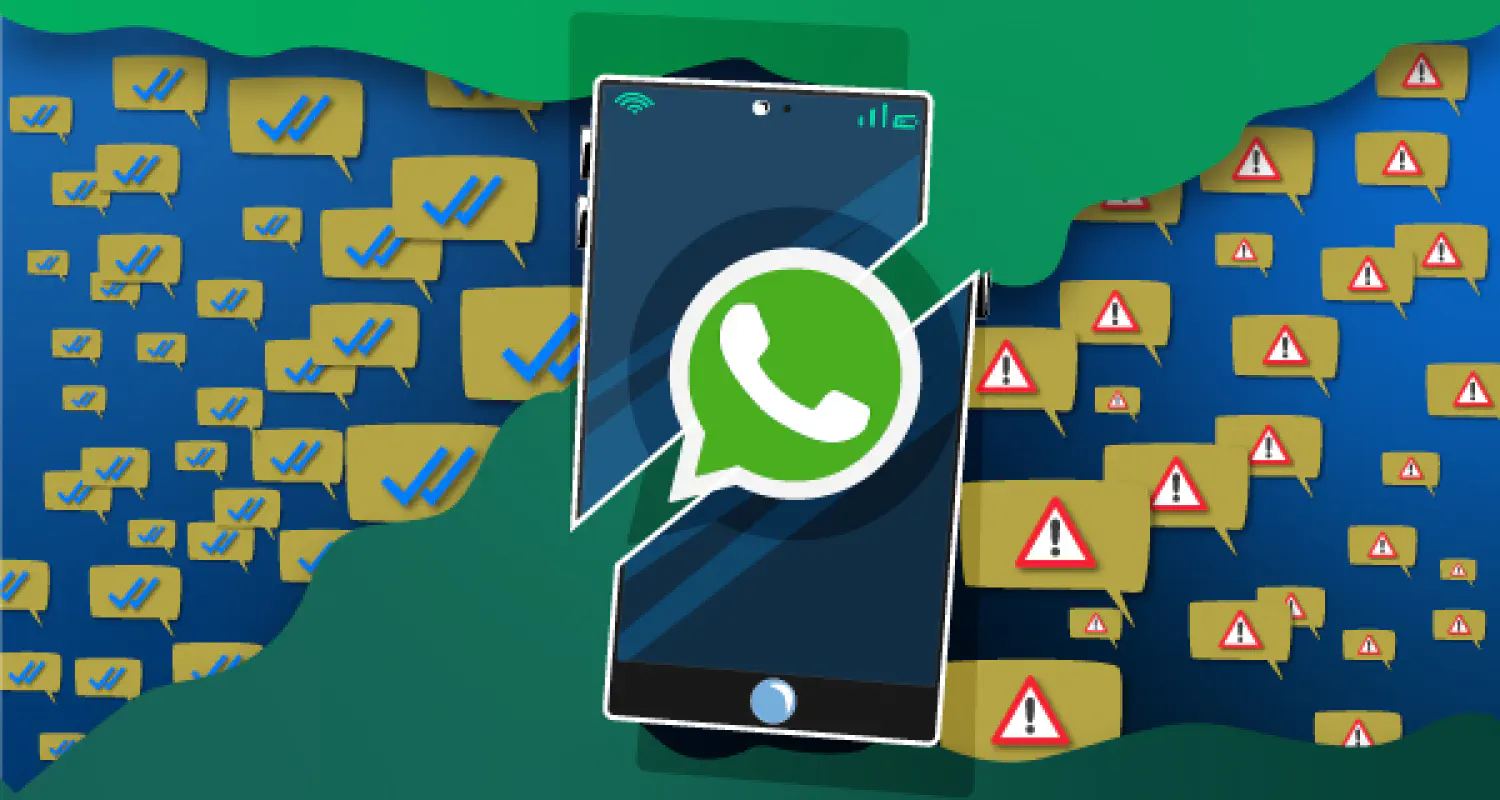How to Use WhatsApp Newsletters [Complete Guide for 2025]

![How to Use WhatsApp Newsletters [Complete Guide for 2025]](https://learn.rasayel.io/en/blog/whatsapp-newsletter/cover_hu14611761203239322892.webp)
Are you tired of email newsletters getting ignored? You’re not alone. People open emails from businesses 21.5% of the time, and even fewer click through. But on WhatsApp, it’s a different story. Over 83% of messages get opened and read. People check WhatsApp all the time, so your updates won’t sit unread.
If you’re a B2B company using WhatsApp to talk to customers, this guide is for you. We’ll explain what WhatsApp newsletters are, why they work so well, how much they cost, and how to send them the right way.
What is a WhatsApp newsletter?
A WhatsApp newsletter is a message you send to many people at once. It can have text, images, buttons, or links. It’s great for sharing product updates, event reminders, or useful tips right in your customer’s chat.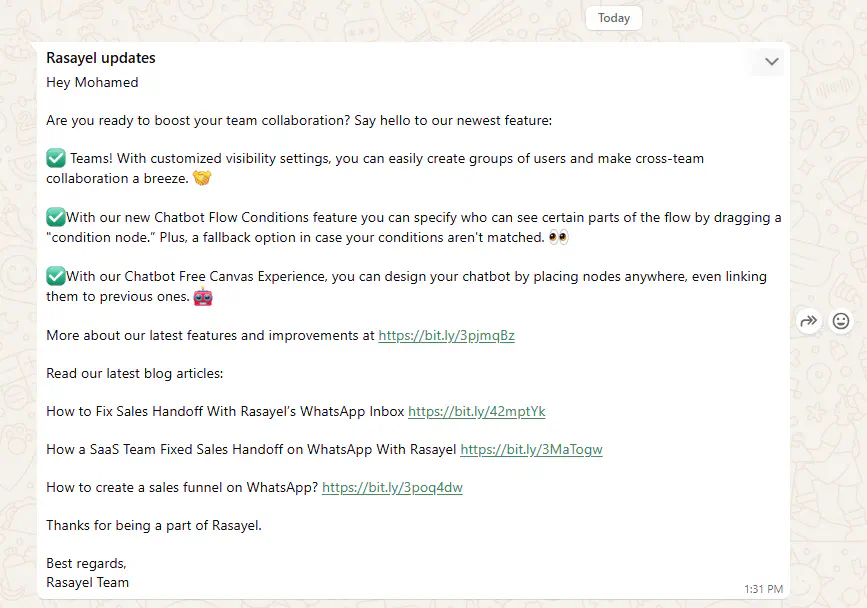
Can you send newsletters with the WhatsApp Business app?
Yes, but with major limitations. You can only message up to 256 contacts at a time, and they must have your number saved in their phone. There’s no automation, no analytics, and no scheduling.
Can you send newsletters from a personal WhatsApp account?
Technically, yes, but it’s not recommended. It violates WhatsApp’s terms for business use, doesn’t scale, and risks getting your number flagged or banned.
Do you need template approval?
Yes. If you use the WhatsApp Business Platform, all newsletters must be sent using pre-approved templates. Approval usually takes less than 24 hours.
Why use WhatsApp newsletters instead of email?
Email newsletters are easy to ignore. They pile up in inboxes, land in spam, and rarely get opened. WhatsApp newsletters land directly in your customer’s chat, where they actually read them.
Here’s how WhatsApp compares to email:
| Feature | WhatsApp newsletters | Email newsletters |
|---|---|---|
| Open rate | 90%+ | ~20% |
| Click-through rate | 45–60% | ~3% |
| Interactivity | Quick replies, buttons | Links, buttons, embedded elements |
| Visibility | High (chat inbox) | Low (spam or promotions folders) |
People check WhatsApp throughout the day, while emails often sit unread for hours. That’s why newsletters on WhatsApp are seen faster, clicked more, and drive better results than email.
When and why to send WhatsApp newsletters
If you’re not sure when to send a WhatsApp newsletter, start by thinking about what your customers need to know. The best newsletters are helpful and relevant to the stage your customer is in. Here are a few common use cases:
Customer onboarding announcements
When someone signs up, a WhatsApp newsletter is a great way to welcome them and guide them through the initial setup process. You can include key steps, helpful tips, or links to valuable resources. A newsletter upon onboarding can help reduce drop-off and set the tone for future engagement.
Feature or product updates
New features often go unnoticed if you rely on email. With WhatsApp, you can send a short update right to your customer’s inbox. Add a button linking to the full release note or demo video, and you’ve got a quick, effective way to drive awareness.
Event reminders
If you run a webinar, a product launch, or a customer workshop, a WhatsApp newsletter is the fastest way to remind people to show up. Because it’s delivered in real time, you can send last-minute reminders and get better attendance.
Loyalty campaigns or rewards
Keep your regular customers engaged with special offers, early access to promotions, or exclusive content. A short WhatsApp message can make your loyalty program feel more personal and drive repeat purchases.
Account-based nurturing
If you’re a B2B company running account-based campaigns, WhatsApp newsletters let you stay top of mind with key stakeholders. You can share tailored content, relevant updates, or personalized nudges to keep deals moving forward.
Content sharing
If you regularly publish blog posts, guides, or videos, you can use WhatsApp newsletters to share the ones that matter most. It’s a good way to stay on your customer’s radar without being too pushy. Just make sure the content is actually useful to them.
Best practices
Use newsletters to teach your customers how to get more value from your product or service. Share tips, how-tos, or quick guides that help them solve problems or improve their workflow.
Industry insights and thought leadership
Position your brand as a trusted expert by sharing news, trends, or original insights from your industry. This type of content works especially well for B2B audiences who want to stay informed but don’t have time to search for updates themselves.
WhatsApp Business App vs API for newsletters
Sending newsletters with the WhatsApp Business app is fine if you’re just starting out, but it doesn’t scale. You’re limited to 256 contacts per broadcast, and they must have your number saved. Otherwise, they won’t receive your message. Plus, there’s no way to automate, track performance, or collaborate with your team.
With the WhatsApp Business Platform (API), especially when used with a tool like Rasayel, you can send newsletters without limitations and have full control over timing, content, and targeting.
Here’s a quick comparison:
| Feature | WhatsApp Business App | WhatsApp Business Platform |
|---|---|---|
| Contact limit per message | 256 contacts | Unlimited |
| Automation | No | Yes (with tools like Rasayel) |
| Personalization | Basic | Template-based, dynamic placeholders |
| Analytics | Very basic (delivered/read) | Full delivery, open, click metrics |
| Team collaboration | Not supported | Yes (shared inbox, mentions, assignments) |
How to set up and send a WhatsApp newsletter (Step-by-step)
Getting started with WhatsApp newsletters is simple once you’ve got the basics in place. Here’s how to do it, step by step.
1. Get WhatsApp Business Platform access
To send newsletters the right way, you need access to the WhatsApp Business Platform. You can’t do this from a personal account, and the Business app is too limited for serious use.
2. Choose your provider
To use the platform, you’ll need to go through an official provider, known as a Meta Business Partner. Rasayel is one of them. A Meta Partner offers expert support, smart automation tools, and can help you figure out what actually works for your business.
3. Collect opt-ins from customers
You can’t message people without their permission. And it’s not enough to ask them if they want to get general updates. Make sure they clearly agree to receive newsletters from you.
Be specific. Let them know what kind of content they’ll get and how often (weekly, biweekly, etc.). This can be part of your signup form, order flow, or a simple checkbox. Always keep a record of that consent.
4. Create and get your message template approved
WhatsApp wants to protect users from spam, so every business message needs to submit a template that gets approved first. You can create this in Rasayel. Just make sure it’s clear, useful, and matches what your customer signed up for. It usually gets approved in under 24 hours.
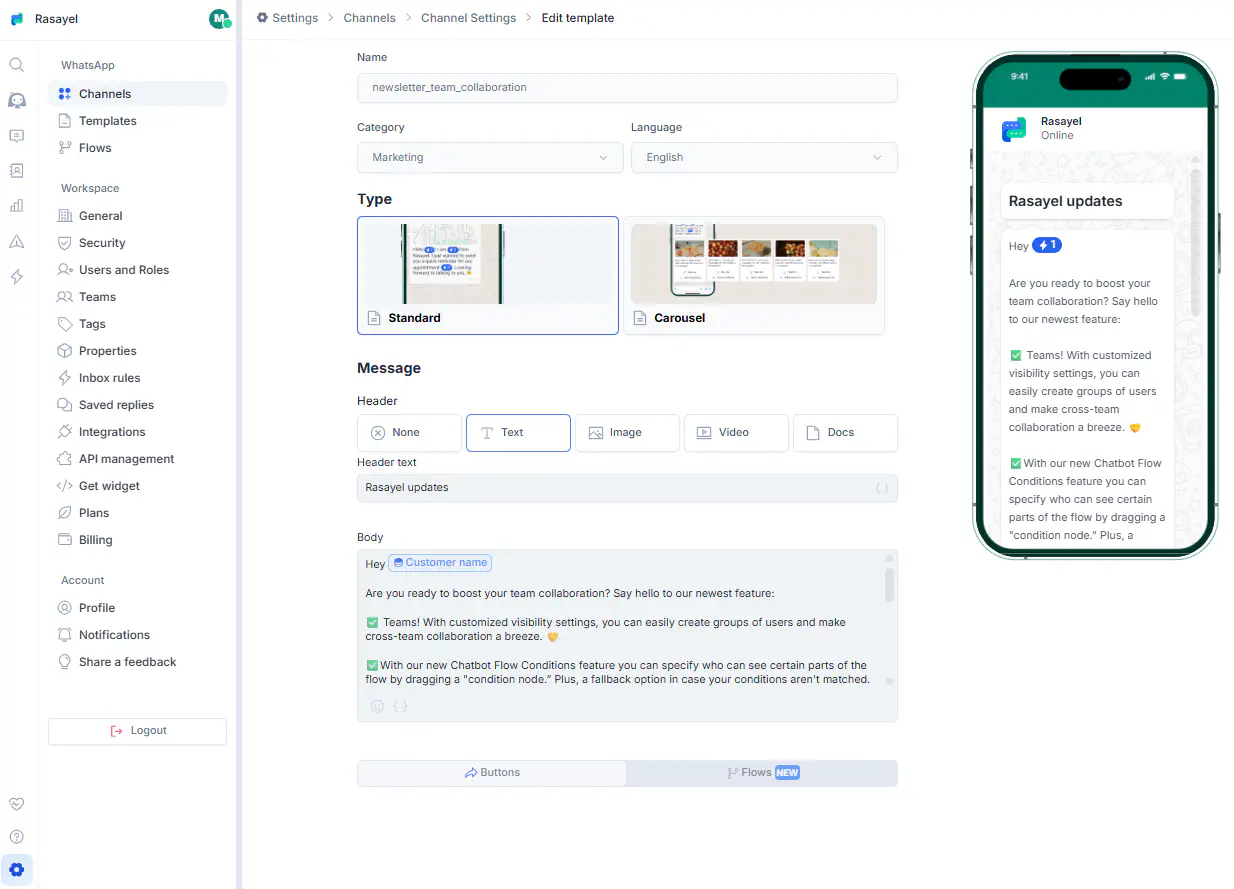
5. Segment your audience
Sending the same message to everyone doesn’t work. Break your list into smaller groups based on what people are interested in or where they are in their journey. This helps you send messages that feel personal and relevant.
6. Send your newsletter
When your template is approved and your audience is ready, you can send your newsletter from your WhatsApp team inbox. As soon as it goes out, you start seeing real-time insights on how it’s performing.
7. Monitor performance with real reports
Once a newsletter is sent, you can track performance inside your team inbox. See how many messages were delivered, opened, or clicked. Dig deeper into session metrics like resolution time, team performance, or peak hours.
Once a newsletter is sent, you can track performance inside your WhatsApp team inbox. You can see how many messages were delivered, opened, or clicked. Dig deeper into session metrics like resolution time, team performance, or peak hours.
WhatsApp newsletter best practices
If you want your newsletters to actually get read (and not ignored), there are a few things worth keeping in mind:
- Don’t send too often. Once a week is usually enough. If you send more than that, people might mute or block you.
- Always get opt-in. Only message people who’ve clearly agreed to hear from you.
- Keep it short and clear. Get to the point quickly, and make sure the message is easy to scan.
- Make it relevant. Segment your audience so each group gets updates that match their interests.
- Use buttons and links wisely. If you want someone to read an article, sign up, or shop, then use buttons.
- Test and improve. Use your reports to learn what works. See which messages get opened or clicked, and use that info to shape your next one.
WhatsApp newsletter costs explained
WhatsApp charges per message for outbound templates. That means each newsletter you send is billed individually based on the type of message, when it’s sent, and where your customer is. If you’re using a team inbox, there’s a platform fee too.
Here’s what affects the cost:
- Message type: Marketing templates (newsletters included) cost more than utility or authentication templates.
- Region: Pricing depends on where your customer is located.
Example:
Sending 1,000 marketing newsletters per month in Saudi Arabia would cost approximately 1,000 × $0.046 = $46 in messaging fees, plus your WhatsApp team inbox subscription.
Automate newsletters with Rasayel
Rasayel helps you automate your WhatsApp newsletters so you can send the right message to the right people at the right time.
Here’s how it works:
Segment targeting
You can group your contacts based on how they use your product, what industry they’re in, which features matter most to them, or how engaged they are. This helps you send newsletters that feel relevant instead of generic.
For example:
- Send product tips to customers who haven’t used a key feature yet
- Share industry-specific updates with contacts in a certain vertical
- Re-engage inactive accounts with a personal check-in or case study
Sequence-based follow-ups
You can set up a sequence that starts with a newsletter, then follows up over time. For example, send a product update newsletter, then follow up a few days later. The messages go out with a bit of space between them, so you’re not overwhelming anyone or coming off as spammy.
Sequence-based follow-ups in Rasayel.![sequence folowups.png]
These follow-ups are built using approved templates and can be timed with delays between each message.
CRM integration
With your CRM connected to WhatsApp, your newsletters stay synced to the rest of your sales and support workflows. You can trigger messages based on deal stages, pipeline changes, or custom events. This keeps your messaging consistent and avoids double work.
Analytics dashboards
Rasayel gives you reports that show how many people got your message, opened it, or clicked a link.
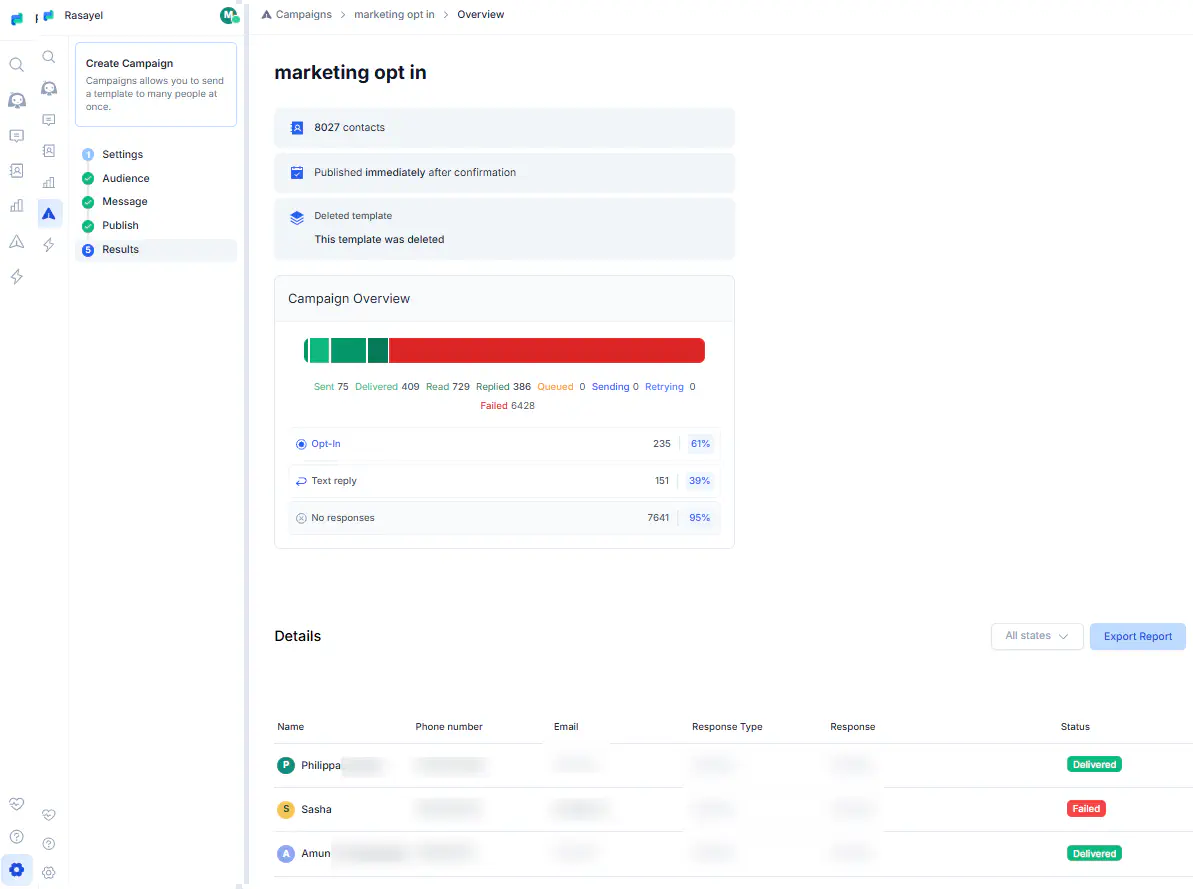
You can also track how fast your team responds, how long conversations stay open, and when most messages come in. These reports help you understand what’s going well and where you might need to improve. You can filter by date, team, or tag to get the full picture.
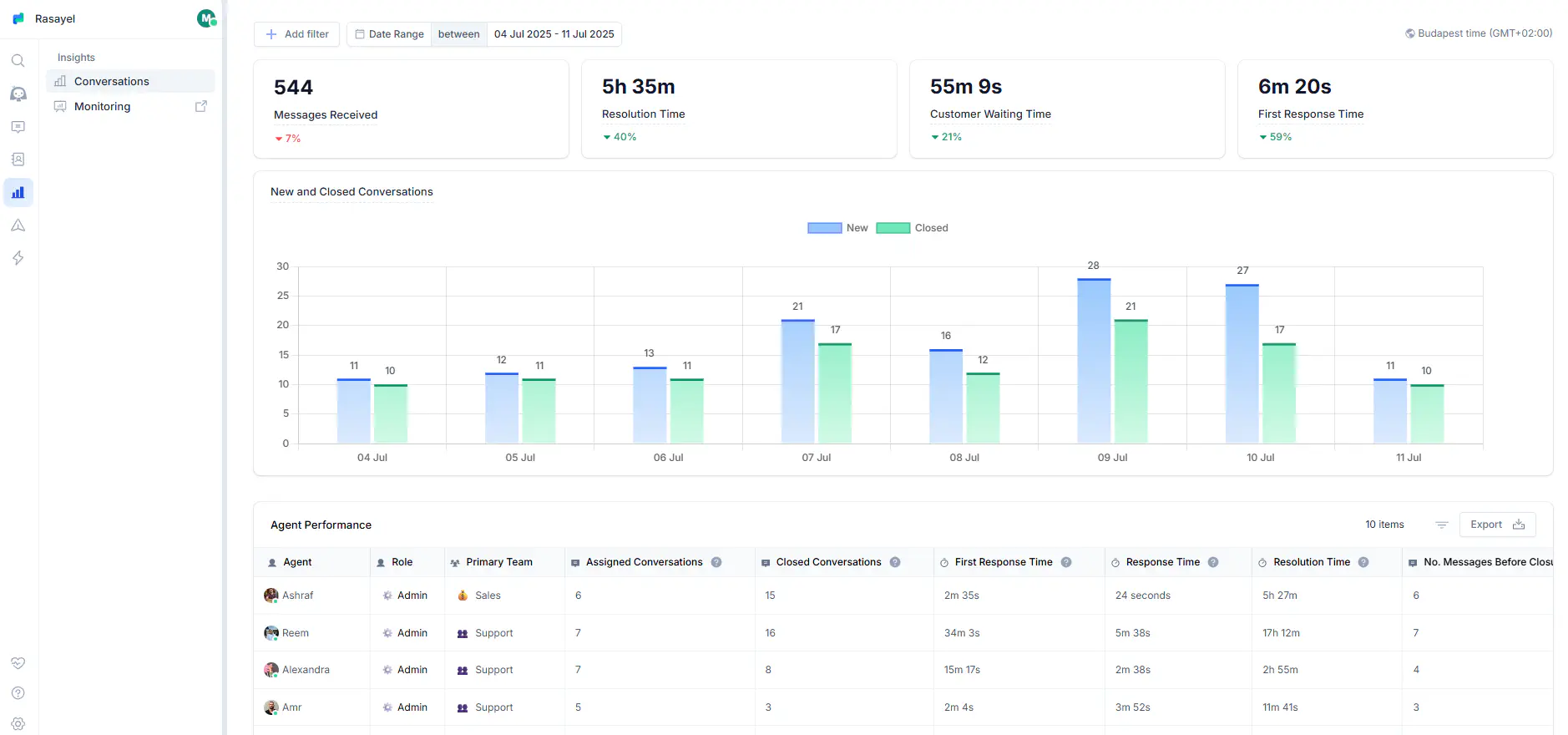
Conclusion
WhatsApp newsletters give you what email often can’t: instant delivery, high engagement, and better visibility. You can send updates, share content, and stay top of mind quickly and at scale.
With Rasayel, you can do all of this at scale. You can segment your audience, send automated follow-ups, track performance, and sync with your CRM. Everything works in one place.
Try it now for free!
Frequently Asked Questions
You can collaborate using the WhatsApp Business Platform through a shared team inbox. This setup will give you:
- A centralized view of all customer conversations
- Conversation assignments
- Tagging and categorization
- Real-time visibility
- CRM and tool integrations
- Access controls and permissions
Rasayel connects directly to your CRM so conversations, contacts, and deal data stay in sync automatically. Here’s what it gives you:
- Automatic contact sync
- Conversation logging
- Deal updates
- Two-way sync
- Custom field mapping

Miodrag is a seasoned WhatsApp marketing expert with over 15 years of experience in B2B sales and communication. Specializing in the use of WhatsApp Business API, he helps businesses use WhatsApp’s marketing features to grow their sales and improve customer engagement. As one of the early adopters of WhatsApp Business, Miodrag has a deep understanding of its tools and strategies, making him a trusted authority in the field. His insights have helped many businesses with their communication strategies to achieve measurable results.
![How to Get Customer Testimonials on WhatsApp [With Examples]](https://learn.rasayel.io/en/blog/whatsapp-customer-testimonials/cover_hu12698422992362155223.webp)

